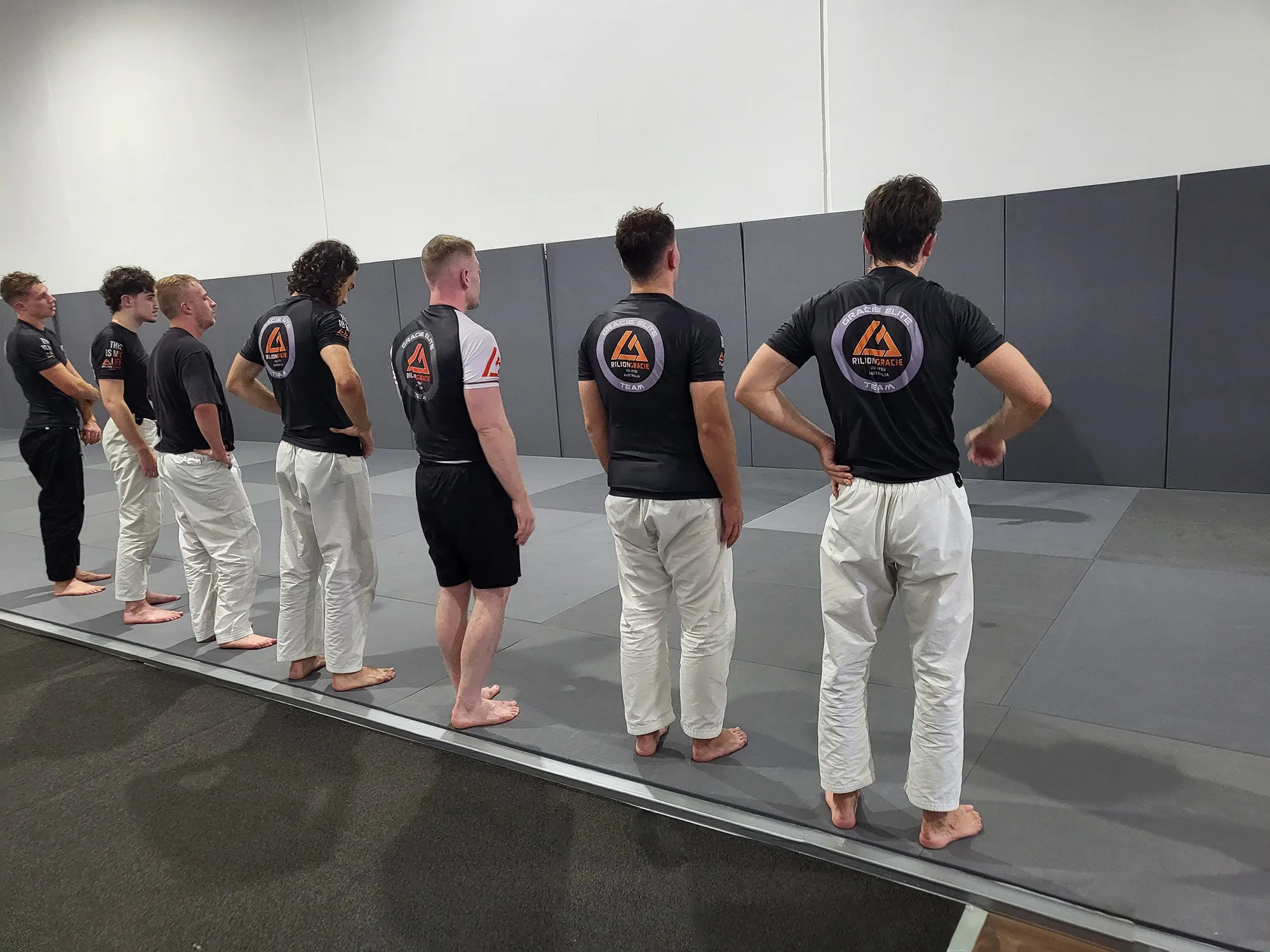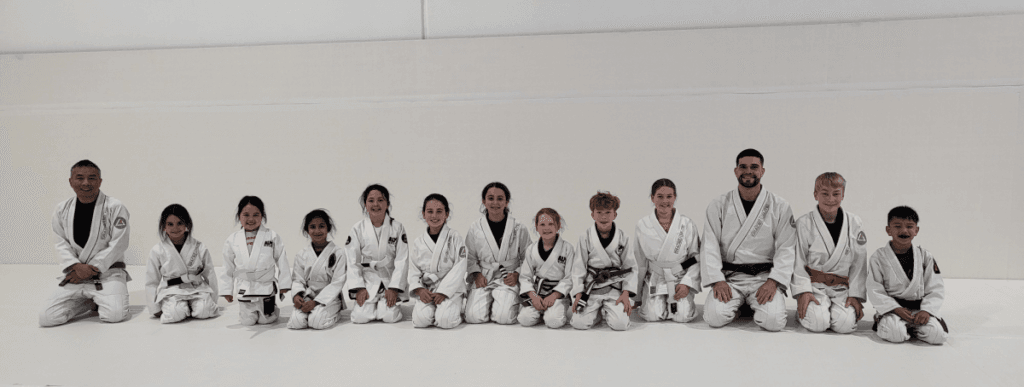Brazilian Jiu-Jitsu, a martial art and combat sport system that focuses on grappling and ground fighting. Considered the gentle art Brazilian Jiu-Jitsu allows smaller and weaker grapplers to defeat bigger, stronger, heavier opponents by using proper technique, leverage, joint locks and holds. Brazilian Jiu-Jitsu also has a range of health, mental and lifestyle benefits
Your first class and what to expect:
- What should you wear & bring. Most beginners won’t have a BJJ GI or uniform therefore wear something comfortable that is suitable for the gym such as a t-shirt, shorts, or other gym clothing (no singlets or tanks or apparel with pockets or zips). Please also bring a towel, suitable footwear and a water bottle.
- Arrive on time. Ensure to arrive 10-15 minutes before the start of the class to familiarise yourself with the facilities and talk to the friendly instructors if you have any queries or questions.
- The Start. The classes will start in a traditional manner such as lining up in order, bowing to the instructors, and/or shaking hands with other students.
- Stretch & Warm Up. The instructor will then go through some simple stretching techniques, warm up drills such as jogging around the mat area, and repetitive BJJ specific drills to help prevent injury.
- Intro Techniques & Lesson. For your first lesson the instructor may then show you techniques for BJJ beginners such as a forward roll, learning how to fall correctly to prevent injury, escaping a bottom position when some has you in their mount (AKA top position), or other techniques. You will then generally go through these with techniques a few times throughout the class to familiarise yourself with the techniques and lessons.
- Drilling Techniques. For your first class you may watch other students or if you feel comfortable to participate yourself in doing the drilling techniques after the specific lesson for the day is taught by the instructor. These drills generally involve maintaining a certain position while your partner is trying to escape and both students are trying to do their techniques with a little more resistance, for example maintaining top control (Mount) while your partner from the bottom is trying escape, not get submitted, and get off the bottom.
- Free Roll. For the advanced classes for students who have been training at least 6 months or depending on the student’s belt level/grade, this involves starting from the ground or standing up with the goal of submitting your opponent then your opponent will generally tap with their hands to end the roll, then the process will start again. The instructors have strict rules in place to protect everyone’s safety such as ensuring sufficient space between practitioners, no striking, also kids under a certain age not yet allowed to do submissions, and various other rules to spar/roll safely.
- Cooling Down. After the lesson, the drilling techniques, and possibly free roll. The instructor will generally go through some stretching and cool down techniques to help with injury prevention.
- The End. This process generally involves Lining up, bowing to the instructors, and shaking hands with other students.


